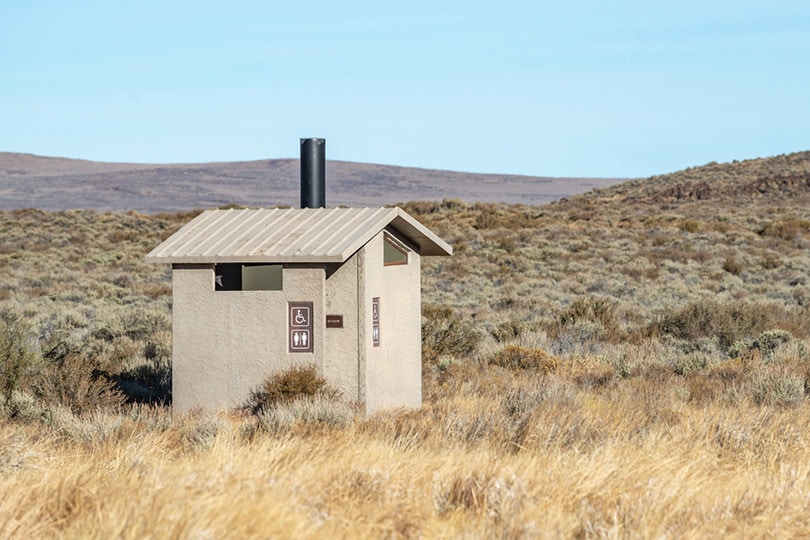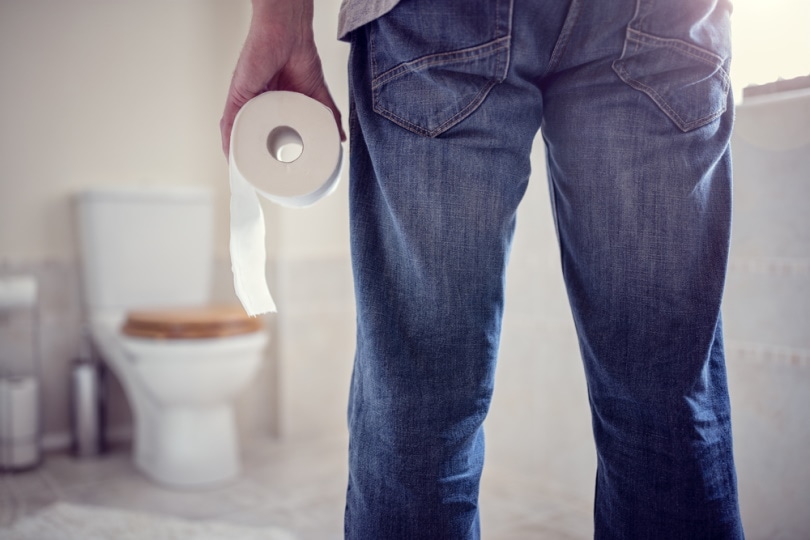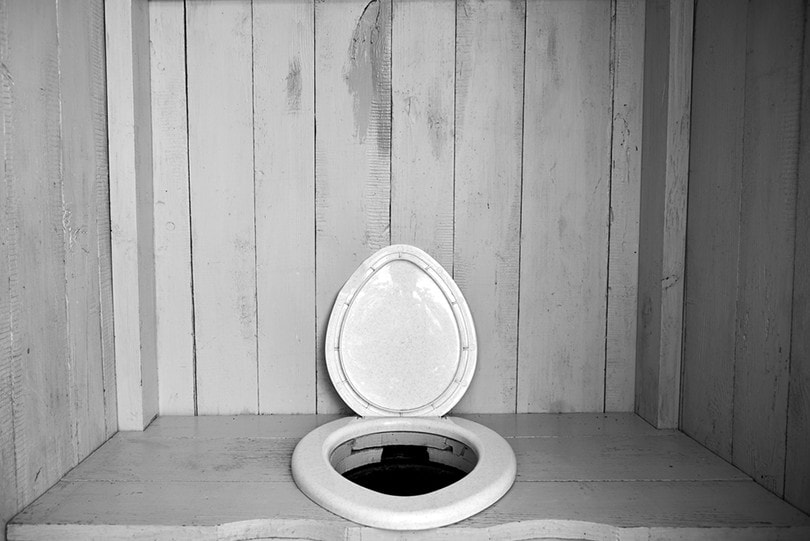What Is a Vault Toilet? Types, Uses & FAQ
-
Pete Ortiz
- Last updated:

Vault toilets are buildings that provide people with a private, odor-free toilet anywhere in public. These buildings are usually stationed around city parks, campgrounds, or other public places lacking water. Vault toilets are built in such a way to provide you with maximum privacy while out in nature. Their name suggests how they’re made—a large concrete vault, usually five feet deep, with a concrete slab and a private booth on the surface. The concrete slab built directly on top of the vault is why these toilets are usually odorless.
Nevertheless, there are some tips on using vault toilets properly, avoiding smells, clogging, and maintaining a clean environment.
How Does it Work?
Vault toilets are waterless, non-flushing toilets with underground vaults that store all the waste. These toilets have two main parts—the underground part called the vault and the above-ground booth. These constructions work by digging up a hole in the ground that will serve as a vault with great capacity—from 1,000 to 13,000 gallons. To add stability, a concrete slab covers the vault entirely. The best terrains for vault toilets are slopes because they maximize and improve the flow of waste. The waste collected in the vault will stay there until the waste management company comes to service it and pump it. It is necessary to empty these toilets fairly regularly depending on their capacity.

Controlling Odor
The first thing that comes to mind when considering vault toilets is the smell. While it is impossible to eliminate, you can reduce the odor to a tolerable amount. The most important part of controlling odors is maintaining a clean environment inside the vault toilet as much as possible. Emptying the pit regularly and cleaning the toilet after each use would be a good start. Always keep the lid down to prevent odor from spreading when no one is using the toilet.
Another alternative method of reducing odor would be pouring a large amount of activated carbon on the waste—carbon helps trap the gases, reducing odors in the long term.
- Adding organic fillers to convert the hydrogen sulfide into odorless nitrogen gas.
- Running long underground pipes that transport the odor away from the toilet to places such as forest zones.

What Are the Different Types of Vault Toilets?
Vault toilets are pretty standard buildings that don’t have many varieties, although some customization is available. They can come in single toilets or double vault systems, and they can even be made into unisex buildings that everyone can use. The materials used for building vault toilets can also vary, depending on the particular use of the facility. They can be made with wooden frames, cross-linked polyethylene, or reinforced concrete structures. The possibilities are vast, but each choice is an excellent solution that will stay durable in zones where there is a high volume of traffic.
Where Is It Used?
Since vault toilets are not the most convenient and practical alternative for a regular toilet, they are helpful in public places where water is not available at all times. You can typically find these structures in camping places, public parks, and trailer parks—the three most common places where you find a vault toilet. These toilets are popular in outdoor areas because of their natural look, resembling a small log cabin. While vault toilets don’t provide a cozy feeling, they are handy in places where you won’t come across a standard toilet.

Advantages of Vault Toilets
There are many advantages of using a vault toilet, especially when you’re out on a campsite and need a private outdoor toilet. While many people may be skeptical about vault toilets, these buildings are pretty useful.
- Vault toilets are very easy to clean and maintain.
- Vault toilets provide maximum privacy for the user since they usually come in the form of a single booth with a locked door.
- These toilets are much easier to build than a regular bathroom, and they are very useful to build outside where there is a lack of water.
- It is convenient to use a vault toilet in a rural area to have quick and easy access to the toilet at all times.
- Vault toilets are energy efficient and don’t use any water to function.
Disadvantages of Vault Toilets
While the advantages are significant, some downsides to vault toilets may make a difference when deciding whether to build one.
- It is essential to clean vault toilets regularly since they are waterless.
- If there is heat, the vent pipe can carry out the odor, meaning that the vault toilet may begin to smell on cloudy days.
- When people throw waste and garbage in the vault, it can cause a blockage.
Frequently Asked Questions

How Deep Is a Vault Toilet?
Vault toilets are usually 5 feet deep, with a concrete slab placed directly on top of the vault, providing an odor-free and easily accessible toilet.
Is It Expensive to Build a Residential Vault Toilet?
Vault toilets tend to be expensive when built on residential land. There is a lot of work that needs to be done by a professional to dig up a vault for this type of toilet. You would need an excavator to dig and create a concrete pit and a craftsman to build a small wooden log on top. It can become a big investment when all the materials and labor add up. These facilities are most useful and valuable in public places because they are durable and long-lasting.
What Is the Difference Between a Pit Toilet and a Vault Toilet?
Although these two toilets are pretty similar, a few noticeable differences can help you tell them apart. While vault toilets are built with a concrete tank, a pit toilet has an unlined hole beneath the soil. This makes pit toilets much safer for the environment since the waste decomposes after some time, while the vault toilet needs to be emptied regularly. Pit toilets tend to smell more and have flies constantly, which is normal since the waste is actively decomposing in the ground.
Another difference between these two toilets is their life span—while vault toilets are permanent structures with regular servicing available, pit toilets have a life span of a maximum of around 5 years, after which they have to be moved to a different location.
In Conclusion
Vault toilets can be incredibly useful in public areas, and when maintained adequately, they can also provide a comfortable experience. Since they are very durable, they will withstand a lot of wear and tear and keep functioning properly for a long time. Remember that it is vital to maintain and clean them regularly.
Featured Image Credit: Dominic Gentilcore PhD, Shutterstock
Contents


